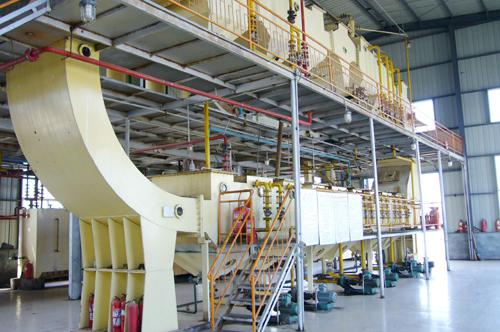Rice bran oil, also known as rice oil, is a high-quality natural and healthy edible oil. Rice bran is a by-product of rice processing. It is a high value-added resource with great development potential and has very high health and nutritional value. Rice bran oil is an important part of it. Rice bran oil not only has a relatively complete fatty acid composition, but also contains many physiologically active substances such as oryzanol, squalene, vitamins, phospholipids, and phytosterols. It is called "nutritional health oil" by nutritionists, and its nutritional value is much higher than that of soybean oil.
The extraction equipment is mostly used for the production of rice bran oil. The commonly used extractors in my country's oil industry include: tank extractor, flat-rotating extractor, drag chain extractor, crawler type extractor, and ring drag chain type extractor. Types, except that the tank type extractor is an intermittent immersion type and the drag chain type extractor is a continuous immersion type extractor, the rest are all continuous percolation type extractors.

The selection of rice bran oil extractor should follow the following principles:
1. Continuous production, continuous production, stable and reliable indicators
2. High leaching efficiency but few leaching stages, clear stages and no mixed flow,
3, strong adaptability, operation flexibility, low power
4. Simple structure, reasonable tightness, convenient operation and maintenance.
According to the principle of continuous production, the preferred types of extractors for continuous extraction are: flat-rotation extractor, drag chain extractor, crawler type extractor, ring drag chain type extractor.
According to the principle of high efficiency, flat-rotation type extractor and ring-type towline type extractor should be selected. Both types of extractors have the characteristics of few leaching stages, clear stages, and no mixed flow. However, because of the unclear leaching stage, the mixed flow phenomenon is serious in the drag chain type extractor. However, the belt extractor has no self-cleaning and a certain flow phenomenon, so the two are not considered in the system.
According to the principle of adaptability, the annular extractor should be selected.
The material layer of the flat-rotation extractor is 4-5 times higher than that of the annular extractor. For rice bran meal with small particles and large powder content, it will inevitably cause piping, bridging and impermeability during the soaking process, which will affect production. , And will make various indicators exceed the standard, which is also proved by practice.
To sum up, the ring extractor is currently the most suitable equipment for rice bran leaching. The advantages of ring-shaped leaching device for leaching rice bran are as follows:
1. The material layer of the annular extractor is thin, and the material layer will be turned over during the leaching process. The material layer will be evacuated during the turning process. The preforms that have been desolvated before and after become in contact with the solvent first. Therefore, the ring-shaped extractor can better adapt to the defects of poor permeability and large adhesion caused by the large powder and small grains of rice meal.
2. Because the annular extractor has a fixed self-cleaning V-shaped shed, it ensures reliable liquid filtration and drenching, so the wet meal contains less solubles.
3. The ring-shaped extractor can be manufactured in batches in professional factories according to the parts, transported in sections, and assembled on site, which improves the precision and speed of manufacturing and reduces the cost.
Copyright © Henan Zhongxing Grain And Oil Machinery Co.,Ltd. All Rights Reserved. Powered by MetInfo